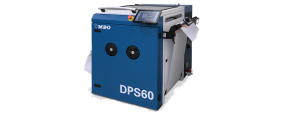PDF: Consider Post-Sales Support When Purchasing Postpress Equipment
“Part of a good Preventative Maintenance plan will be to regularly replace the parts that are starting to get worn before they have a chance to fail.”
 More than any other value-adding finishing step, perforating makes print interactive.
More than any other value-adding finishing step, perforating makes print interactive.
When perforated sections are pulled from direct mail pieces and other kinds of printed matter, things start to happen. People pay their bills. They order products and services. They collect coupons for redemption. They request information. Perforating puts the ability to do all of these things literally into their hands.
Perforating has been a standard practice in postpress for decades, but in recent years, the characteristics of many of the jobs that require perforating have changed. They’re produced in smaller quantities and, often, in multiple versions within the same run. Limited to perfing every piece in one way and one way only, conventional perforating systems were never meant to deal with the variable complexity of digital print production workflows.
Static perforating on standard die-cutting equipment still has an important role to play in postprint processing. Today, however, perforating also needs the flexibility to keep up with digital printing demands. This white paper reviews two approaches to flexible perforating that provide printers and converters a full set of options for getting the job done in the most efficient way.
The small footprint of this free-standing, self-contained unit lets it function either as a component of an existing finishing system or as an add-on to a press.